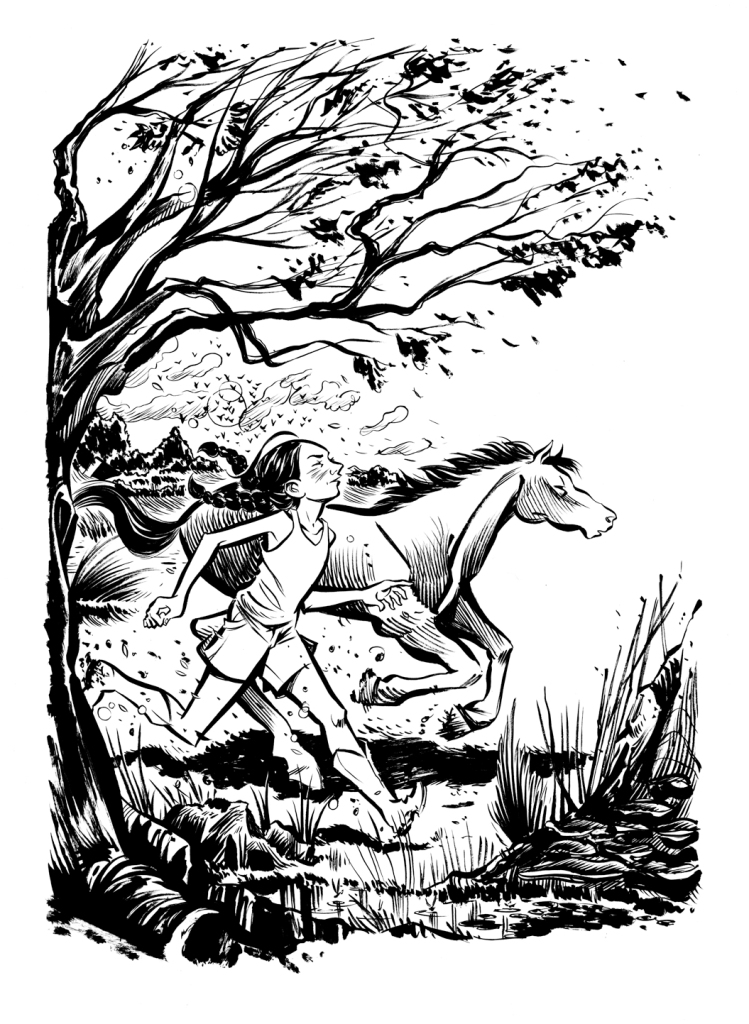Filed under: drawing, drawing theory, events, illustration, my antarctica, picturebooks, sketchbook, south africa | Tags: art, books, children's books, creative talks, drawing, illustration, picture books, sketch, south africa, writing, writing seminar
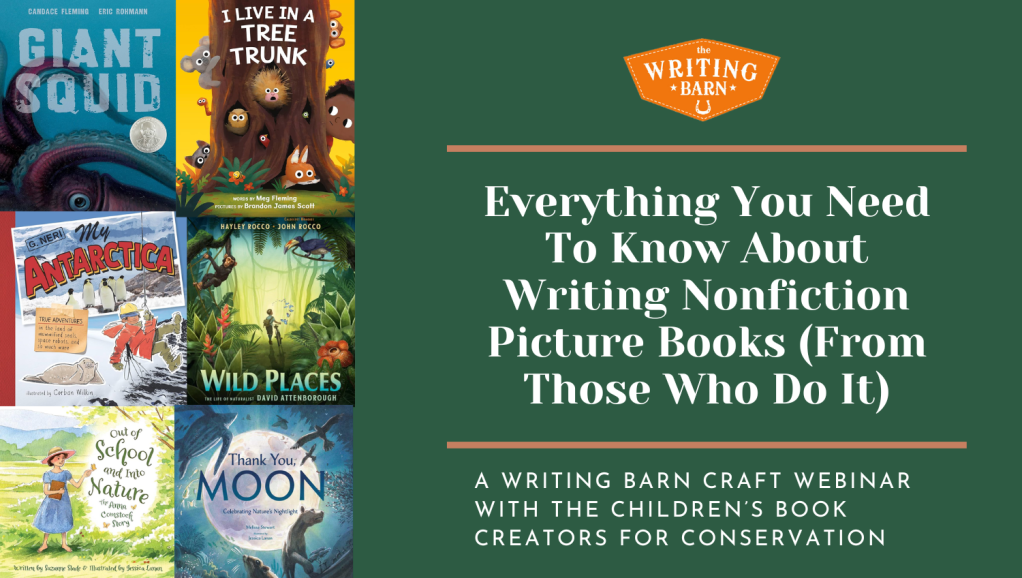
This March 16th I have the immense honour of speaking alongside six truly great children’s book creators in The Writing Barn’s online seminar about nonfiction picture books.
I’ll be speaking on the topic “Making Room for the Illustrator” and touching upon real-world visual research and how illustration can contribute to nonfiction storytelling.
Here is a one-time opportunity to learn new ideas, methods and approaches to creating nonfiction picture books from seven of the most successful book creators in publishing AND help save South Africa’s wildlife at the same time. In this fast and fun, 90 minute event we will cover every facet of the creation process from research and ideas to creating and selling your book. Above all, you will discover how to take known facts and transform them into a true story that is uniquely yours — exactly what agents and editors are searching for.
Led by the amazing group Children’s Book Creators for Conservation, this webinar will be full of unique insights and take aways. This is a charity event with $30 of your registration fee going directly to Wild Tomorrow, a nonprofit working to restore wildlife and wild places in South Africa.
Sign up for the online event here.
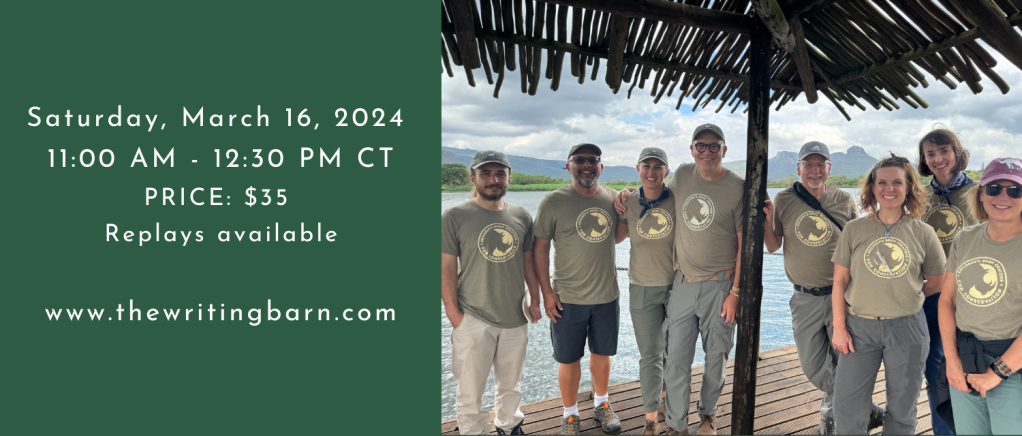
Filed under: comics, events, graphic novels, writing | Tags: art, books, cartoons, comics, drawing, graphic novels, illustration, writing
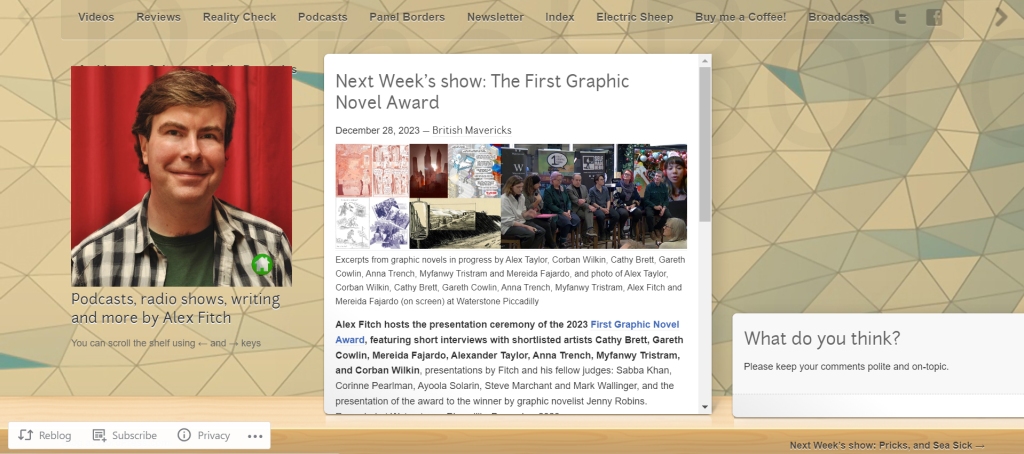
Filed under: comics, drawing, graphic novels, writing | Tags: art, awards, book-review, books, comics, fiction, graphic novels, illustration, news, writing

On Monday I had the immense honour of being invited to Waterstones Piccadilly to speak alongside the six other shortlisters for the First Graphic Novel Award on a panel hosted by the inimitable Alex Fitch of Panel Borders, who asked us some pretty challenging and revealing questions about our shortlisted graphic novels.
The insights my fellow shortlisters gave about their books showed how deeply and carefully they have thought about their work and proved once again the wealth of talented, intelligent people who are putting immense amounts of their own time and effort into this complex artform.
After the creators spoke, the seven judges for the award spoke each in turn about one entrant’s work. My entry, The Infinite Benefits of Shame, was addressed with the most incredible care and detail by Ayoola Solarin, for whose words of understanding I am more grateful than I could have imagined.
The award was given to Bone Broth, by the amazingly talented Alex Taylor (azbtart), with whose precocious artistic skill I’ve no doubt will produce a finished book more than worthy of this award. However, I think I speak for all of us when I say that as the seven shortlisters, we were just very lucky to be up there out of 170 entrants to the award.
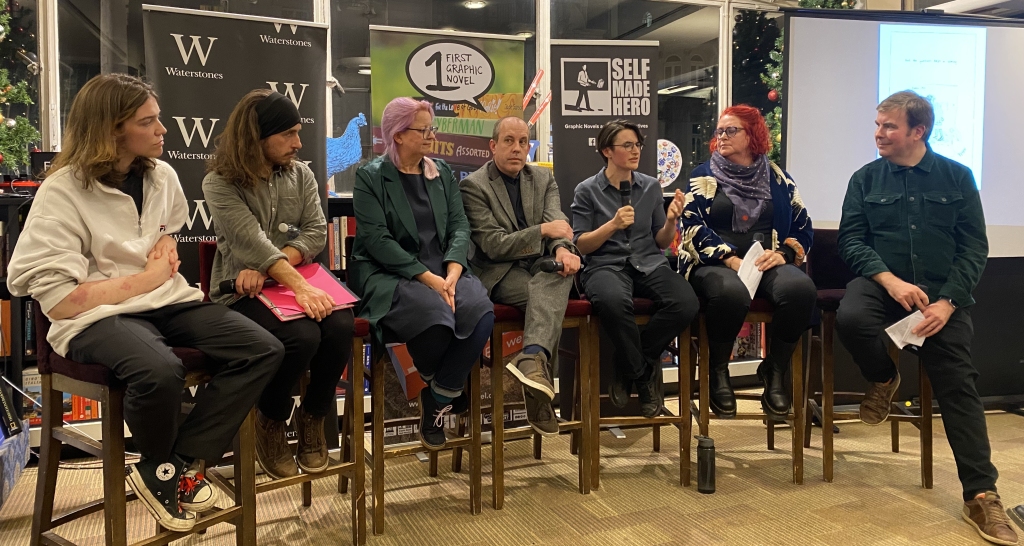
As I grow older, and especially after hearing the kind and thoughtful words of the judges and other entrants, I’m realising more and more that the point of all this is not selling a book or winning an award: the point is to communicate. I’ve written recently in this journal about how I’m not always as good at meeting and getting to know people as much as I wish I could be. The only reason I write and draw is out of a kind of yearning to communicate, to articulate something that I am trying to understand about myself. I’ve always hoped that by finding a way to share this stuff, there would be people who would be able to read it and feel understood.
All my most profound experiences of art have involved the feeling of being totally understood by the author or artist whose work I’m experiencing. To see articulated by total strangers, in words or images, your own deepest feelings, things which you have not even understood yourself, is the pure magic of art. Our favourite artists seem to understand us more than the people we see every day. And to know that artists sacrifice everything to journey into their own underworld to find this understanding and offer it to the world is what drives me to continue trying my best to do the same.
Gaining a deeper insight into my own motivations for doing this, and experiencing the validation of being championed as one of the final seven, is a reward as great as any win, and I can only humbly thank you all one last time for the work of putting it together.
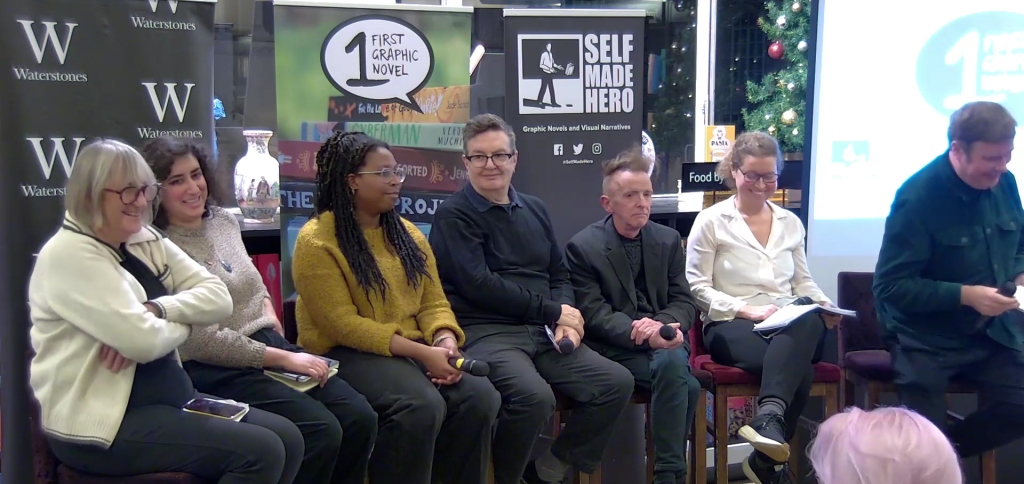
Thank you Corinne Pearlman, without whom the award would not exist; Emma Hayley, who has invited me along to many cool things over the years; Sabba Khan, who welcomed me so warmly to the event; Mark Wallinger: an unbelievable privilege to have him reading our work; Steve Marchant, who has already taught me and many others so much; Alex Fitch, for his world-class panel-hosting skills; and once again Ayoola Solarin for her support for my entry, which means everything.
Also thank you to James Spackman and the BKS agency, the ALCS, The Cartoon Museum, SelfMadeHero, BBC Radio 4’s Front Row, and to Waterstones for hosting the event! This is all so much more than I deserve and I can’t really express how grateful how I feel. And congratulations once more to the star of the event, Alex Taylor!
The event was a blur of nerves and excitement, but fortunately you can watch the whole thing on Vimeo.
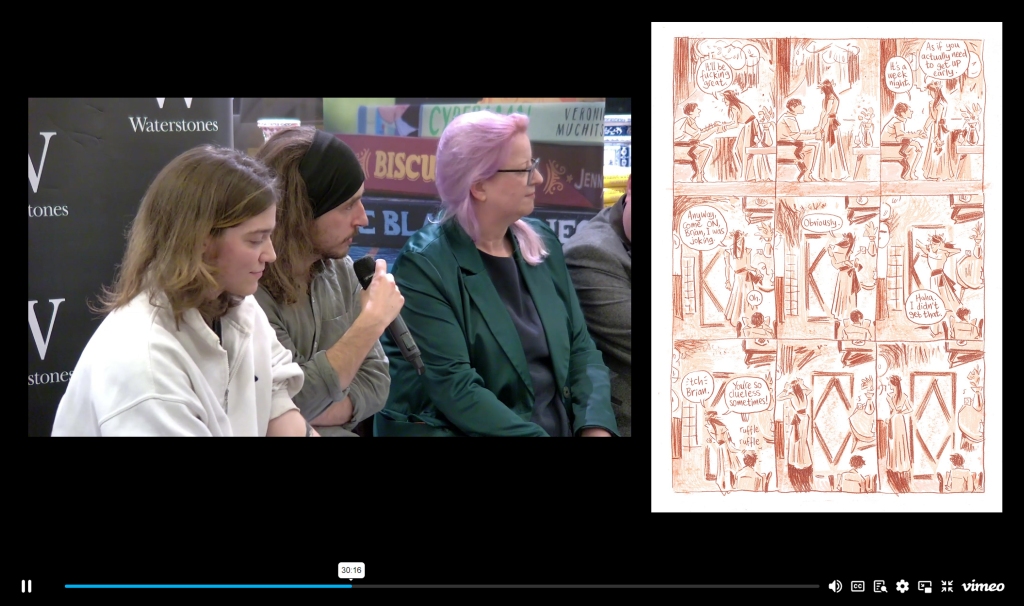
Filed under: comics, drawing, graphic novels, writing | Tags: adult comics, art, award, comics, drawing, first graphic novel award, graphic novel, graphic novels, line drawing, writing

My comic The Infinite Benefits of Shame was shortlisted for the First Graphic Novel Award this weekend at Thought Bubble!
Congratulations to my fellow shortlisters:
Florrie by Anna Trench @anna_trench
The Hiraeth Club by Gareth Cowlin @garethcowlin
Mrs Thorwald by Cathy Brett @gingerdoodles
Zayani Zam by Mereida Fajardo @m.ereida
The Noisy Valley by Myfanwy Tristram @myfanwytristram
Bone Broth by Alexander Taylor @azbtart
Whoever wins, it’s an incredible recognition to have been chosen from among so many entrants and I’ve been humbled by the quality of the other entries.
All of you, who are making personal and deeply-felt work in this ludicrous artform, in this country, in these increasingly-difficult times: you are already winners in my eyes and I love you all for doing what you are doing.
Thanks to the lovely Khadija Osman @k_o_writing and Corinne Pearlman @corinnepearlman for putting together and attending the table (and for the rum)!
And thanks to Chloe Green @okaychloegreen, James Spackman @blackpooltower01 and Zara Slattery @zaraslattery for announcing the shortlist.
Thank you to the judges (and champions of comics): Steve Marchant (plus everyone at @thecartoonmuseum), Emma Hayley (plus everyone at @selfmadehero), Corinne Pearlman @corinnepearlman, comics critic Ayoola Solarin @immortanayo, graphic novelist Sabba Khan @sabbakhanart, artist Mark Wallinger @mark_wallinger_mark, and Alex Fitch at @panelborders for seeing potential in my work.
Plus thanks to @alcs_uk and James and everyone at @bksagency for all they have done to sponsor this award and put it together.
The winner will be announced at Waterstones Piccadilly on Monday 11 December 2023.
Tickets available at Eventbrite.
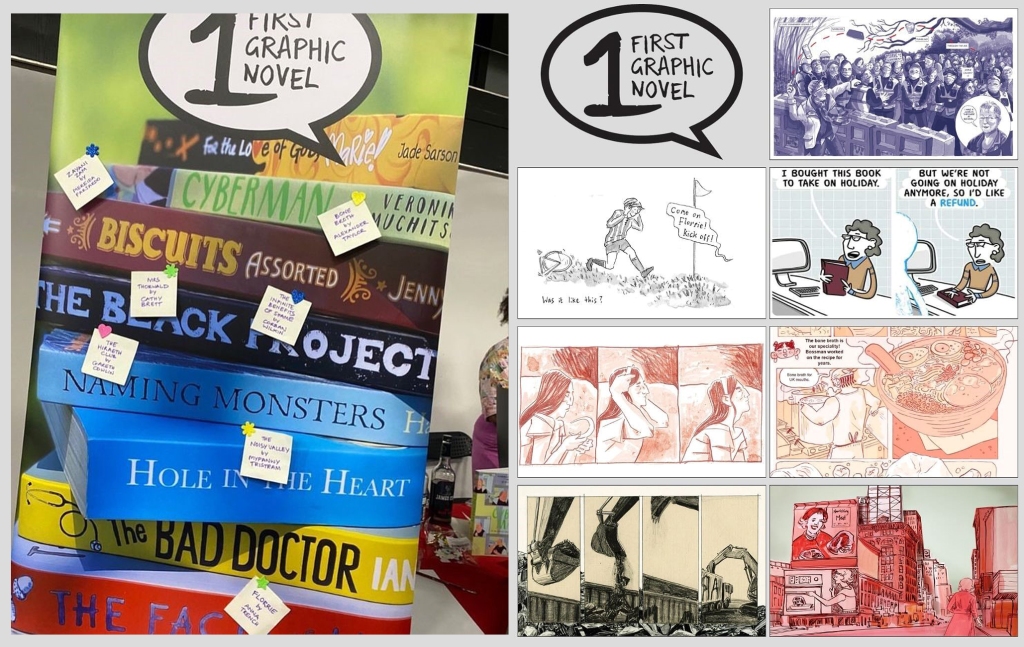
Filed under: comics, drawing, graphic novels, illustration, my comics | Tags: art, comics, graphic novels, illustration, writing

























Filed under: comics, comics theory, graphic novels, my comics, writing | Tags: books, comics, fiction writing, graphic novels, writing, writing theory

Sometimes your favourite bits of writing aren’t a good fit for the story…
When I’m writing a graphic novel and I find something that works, there’s this tendency to ‘over-write’. One small element of a story will suggest a side story or something in a character’s past, and when I sense that there’s something there, I’m almost obligated to follow it.
Writing fiction is a weird process.
Doing it at all seems to require entering a sustained state of lateral thinking. Finding something that really works, that takes on a life of its own and gets up and starts walking around, feels so miraculous when it occurs that you sort of have to let it do its thing and see what happens. What can happen is you end up with stuff in a story that does something effective in its own right, but doesn’t actually benefit the story as a whole.
A result of these tangents is that you can end up with a large project that appears complete but still doesn’t feel fit for sharing. At least three times now, I’ve experienced the immense relief of cutting a big chunk of material out of a larger work, and realising that it never really belonged there, that it was getting in the way of the real story.
The stories I love the most are very simple, but suggest deeper things going on just before, just after, just off-camera, just under the surface. Explicitly expanding a story too much robs it of mystery or space for the reader’s mind to work in. You have to cut the part to save the whole.
Cutting something out of a story can be agonising.
When you’ve found something good, you’re desperate to hang on to it, even when doing so doesn’t make sense. You can’t discard something that you like this much, you think, and you rationalise keeping it in by convincing yourself that it makes the larger work ‘eclectic’ in some vaguely-defined way. Some writers can do ‘eclectic’ and make it work to brilliant effect, but don’t you just hate it when you’re enjoying a book, and a new chapter starts, and the viewpoint changes, and suddenly it’s about something else? ‘Hey,’ you think, ‘I was enjoying that.’
So to convince myself to remove these parts that I like but which weigh down the larger work, I have to ‘save’ them in some way, to gain some kind of closure and move on from a story that’s still living in my head. They have to expand into their own full story, or stand alone as a short story, to in some way find a final form. Maybe by itself it doesn’t necessarily have a firm ending. Maybe, in the same way you’re trying to acheive for the main work, an excised sub-story like this can sit as a fragment, suggestive of something bigger.
Filed under: amy & kay, comics, drawing, graphic novels, illustration, illustrations, my comics, writing | Tags: art, books, comics, illustration, sketch, writing
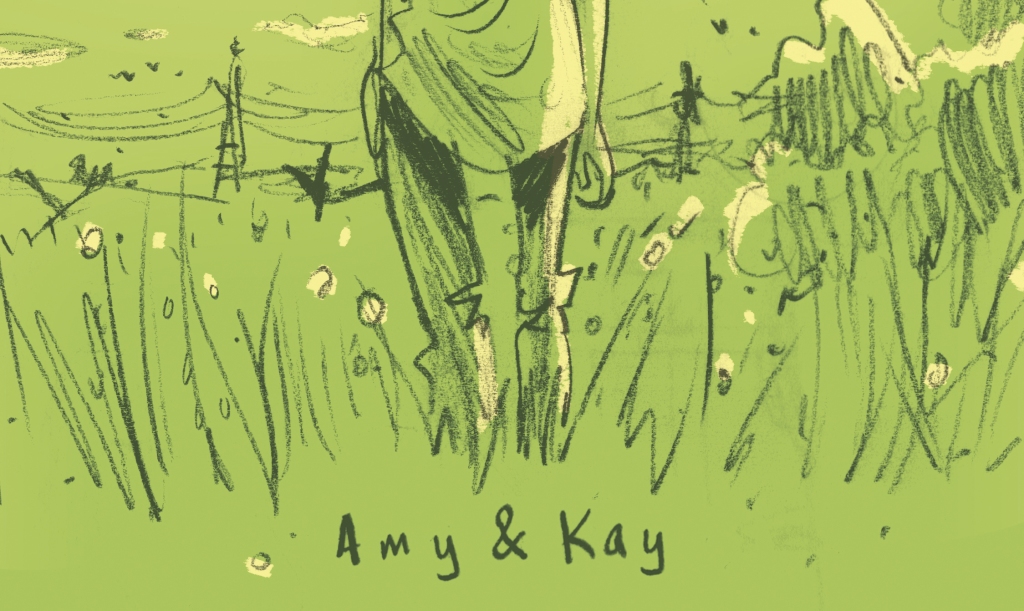
There’s a time in your early twenties when you start to realise that you’re not cool anymore.
You start to see all your friends getting real jobs, getting real relationships, moving into nice homes, and meanwhile, you’re still the same punk you’ve been since you were fourteen, the one who all the kids used to think was the coolest person in your local town, the one who everyone used looked up to, the one who always knew where to find a good time, but now you’re twenty-five and all of a sudden it seems like no-one cares anymore.
At least this is what it’s like for Amy and Kay. Life used to be so simple, but now it feels like everything’s slipping away. And when the painfully uncool Laura inserts herself into Amy’s life, it becomes painfully obvious that adulthood has arrived, and if Kay chooses to ignore it, who knows where she might end up…
I’ve been drawing this thing with a 4B pencil for a year or so now, fitting it in to spare days and watching it grow. As it nears completion, I thought I’d share a short scene from the second chapter. I’ve been gradually working on several graphic novels over the last few years. Call me scatterbrained, I can never seem to focus exclusively on one project. But Amy & Kay is getting close to completion at around two-hundred pages, and I can’t wait to share the complete story with everyone who’s ever wondered if they’re about to be left behind.
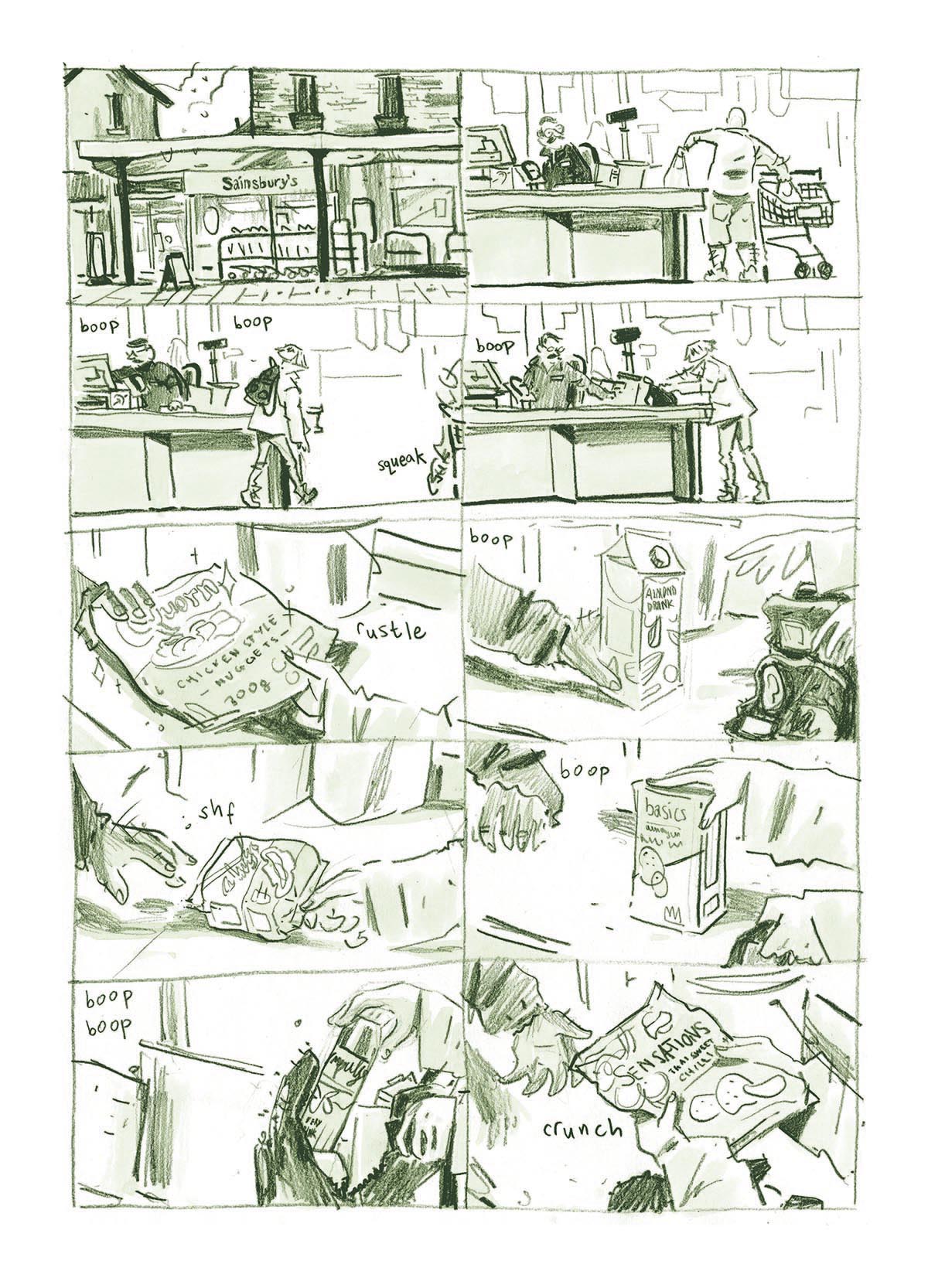
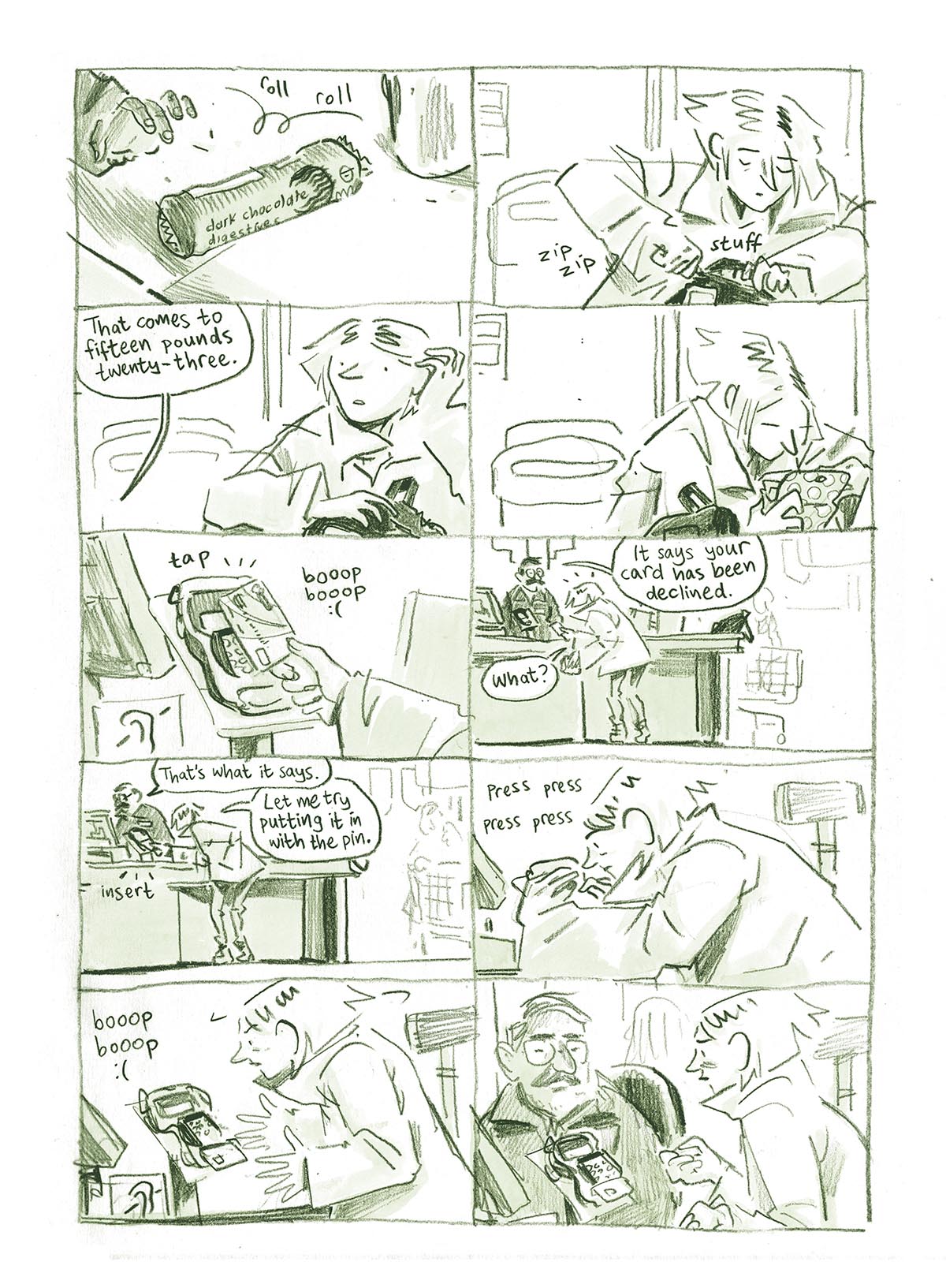

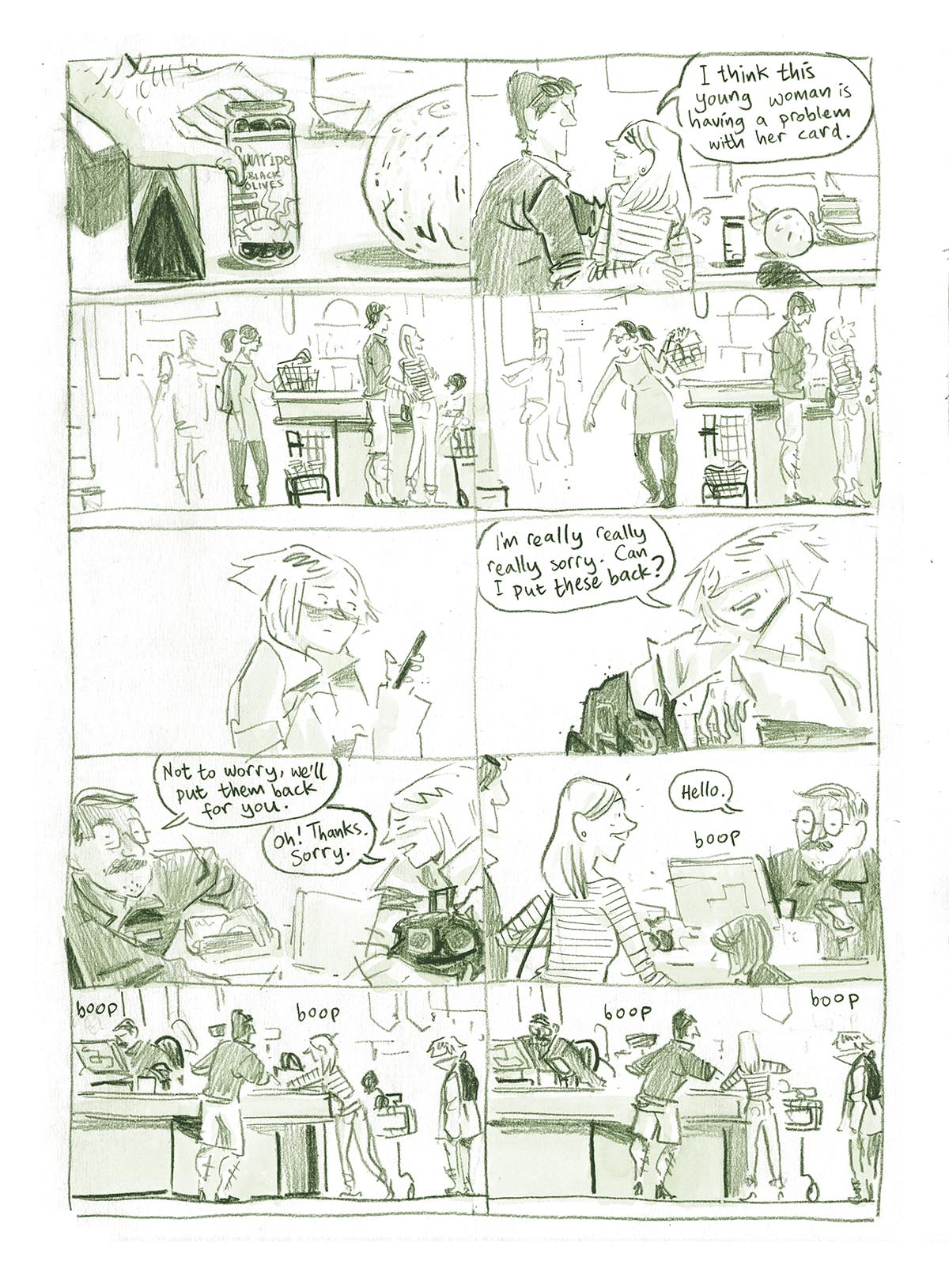
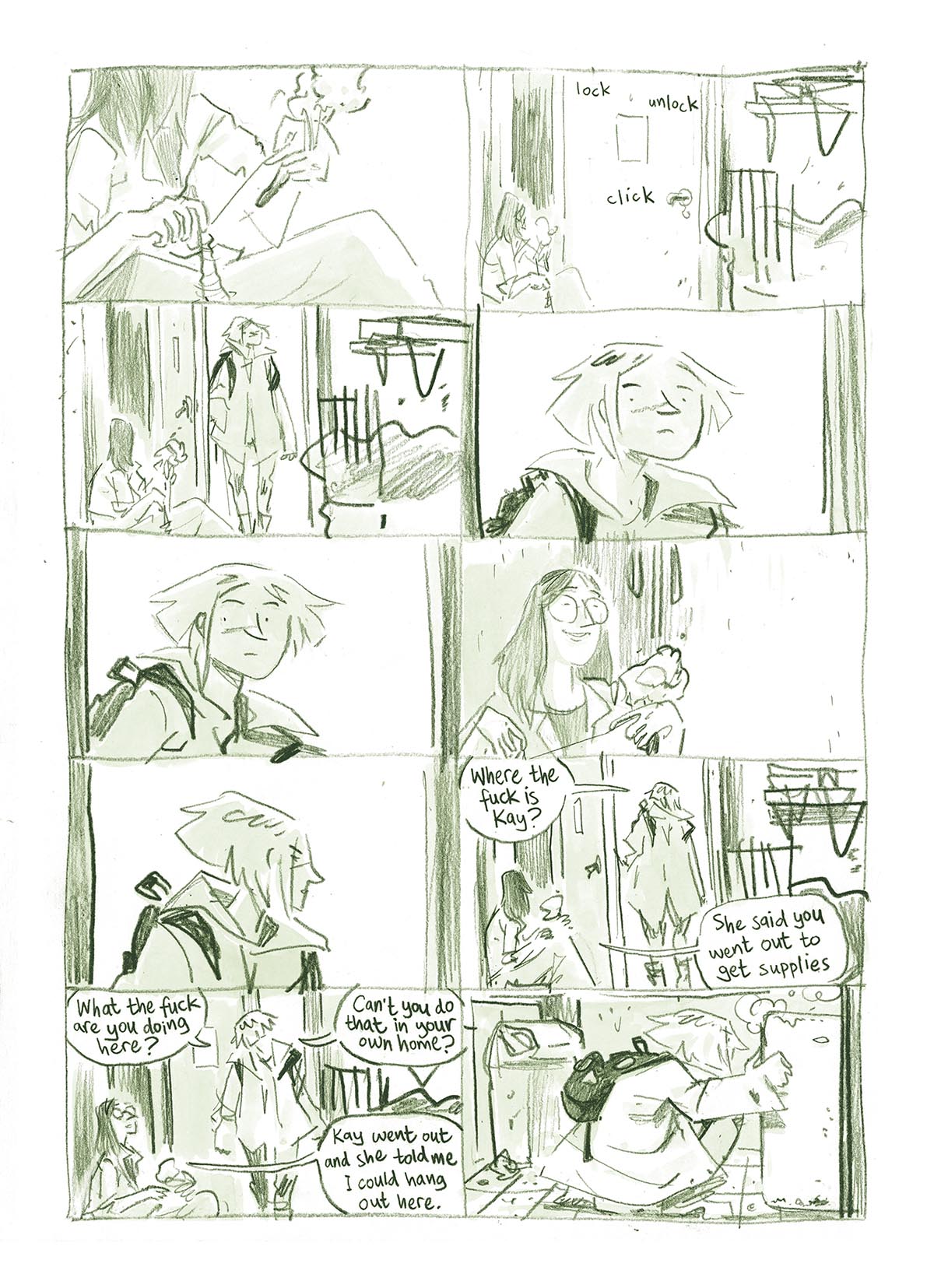
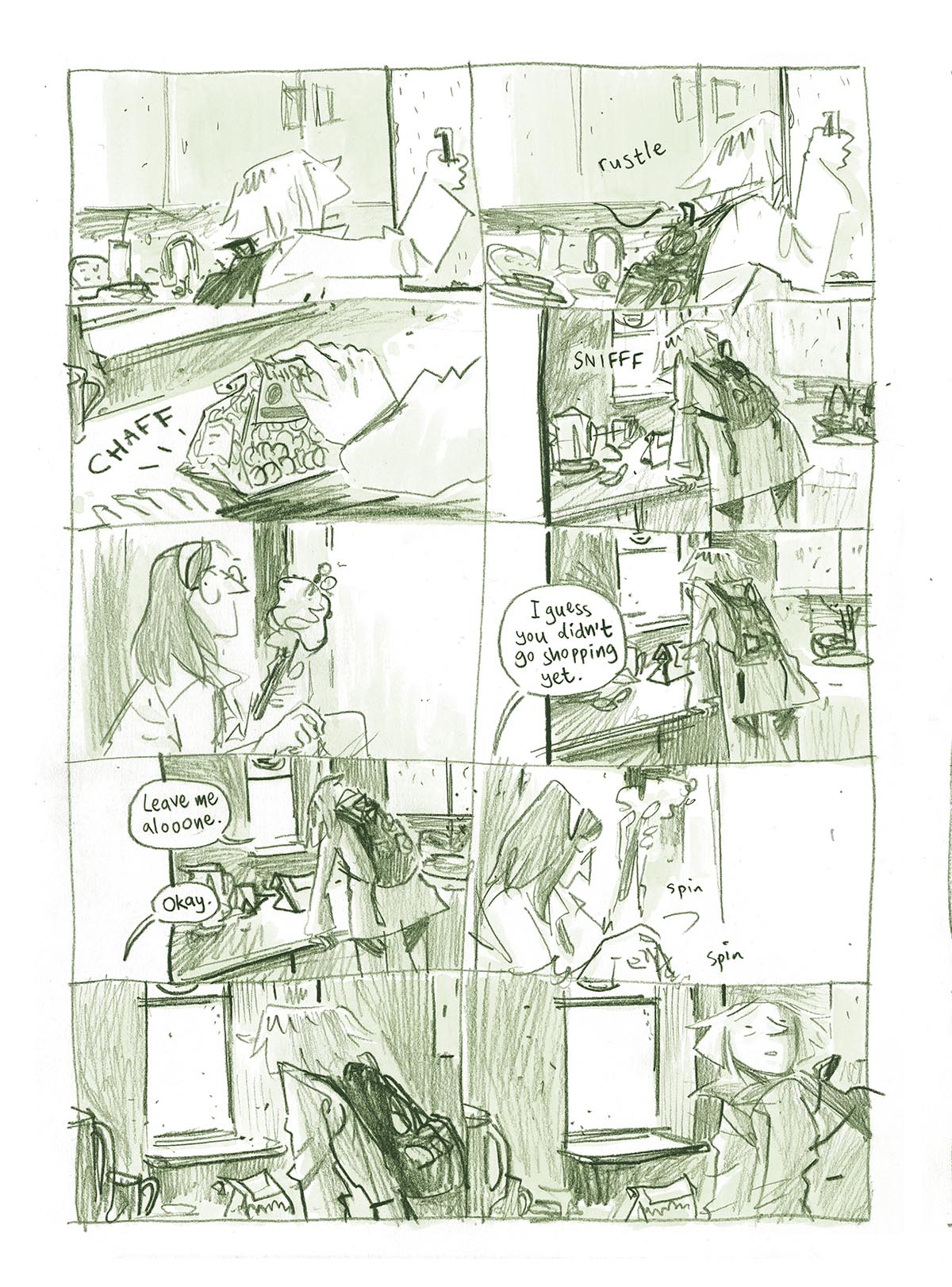

Filed under: amy & kay, comic artists, comics, comics theory, drawing, drawing theory, faith in strangers, graphic novels, my comics | Tags: art, art theory, cartoons, comic strip, comics, drawing, graphic novel, graphic novels, how to draw, illustration, making comics, wab sabi, writing
“Nothing lasts, nothing is finished, and nothing is perfect.”
Comics has a spontaneity problem.
Chris ware said that, unlike writing prose or playing music, it isn’t really possible to get into a creative flow when making comics, that the technical demands are too complex and the rate of creation too slow.

The classic way of drawing comics is pretty convoluted. Script, thumbnails, roughs, underdrawing, inking. In fact, almost all comics were traditionally made by teams of three, four, five, or more people all doing their own separate bit to cobble it together.
But what really matters? I care about dialogue and relationships between characters more than anything. Do I care about comics having stunningly beautiful artwork? Well, yes, to an extent. But most of the time, artwork that is too involved, too complex and eye-catching, actually distracts the reader from the story. In a comic, the drawings should be in the service of the story, not in the service of themselves. So when we agonise over every panel, trying to make it a work of art in its own right, we may actually be doing more harm than good.

In trying to find a way to make art without being neurotic about it, I’m making myself work in ways that force me to embrace imperfection. The way I see it, however hard one tries, the result is bound to contain imperfections.
In fact, the acheivement of ‘perfection’ in art is asymptotic, i.e. you can approach it, but never reach it, and as you get closer, exponentially more energy is required to make further progress.
Or in other words: the first 90% requires 10% of the work, and the last 10% of the work requires 90% of the effort.

So maybe it’s better to embrace imperfections rather than engaging in the desperate struggle to overcome them all.
I’m starting to realise that the attempt to iron out all kinks in a piece of writing or drawing is mostly a barrier to progress.
Wabi-sabi is a concept originating from Japan that embraces the transience and necessary incompleteness of anything humans create. Starting from this idea leads one to principles of simplicity and finding natural approaches to creation.

I’m having a go at drawing comics with the most natural approach that I possibly can. Two projects I’m currently working on, my graphic novel Amy & Kay and a daily comic strip Faith in Strangers, are both drawn in pencil without much planning or any underdrawing, and with the intent to embrace imperfection as far as I can bring myself to do so.
When things go right, drawing this way looks more spontaneous and interesting than any laboured-over drawing. When it goes wrong, it’s imperfect, but somehow hangs together with everything else, and balances with the parts that are more successful or complete.
Make the unfinished and imperfect nature of the work part of its essence, like a painting with areas of blank canvas, or a song that cuts off in the middle of the climactic moment.
Filed under: comics, graphic novels, illustrations | Tags: art, books, children's books, comics, graphic novels, horses, illustration, writing
After a long hiatus, I’ve just finished drawing the gigantic project with G.Neri (author of Tru & Nelle), that’s been ongoing for some time. I’ve generated a four-inch-thick stack of pages with roughly the heft of a small child. Still much to do, but the complete, unedited thing is there, in a big box under my desk.
Filed under: comics, comics theory, graphic novels, illustrations, my comics | Tags: art, books, cartoons, children's books, climate change, comics, graphic novels, illustration, science, writing

I’ve been in the habit, for a long time, of drawing TOO SMALL! So right now, working on the Low Carbon Future graphic novel project with Leeds University, I’m drawing these pages at the largest scale I’ve ever done for a comic, and I have to say, it’s very refreshing.
These pages I’m doing are to be printed around A4 size (210x297mm), which is large, so I’m drawing them at something like 500x720mm, not far off A2, which is gargantuan. I think people used to draw comics on paper that large, to be printed on big full newspaper pages, and they scanned them with those massive old drum scanners you don’t see anymore.
Admittedly, I am making this easier for myself by using the ‘french graphic album method’ of drawing two half-pages and then printing them together. It makes having the thing on your drawing board a lot less cumbersome. Anyway, more on this when it’s looking finished.

